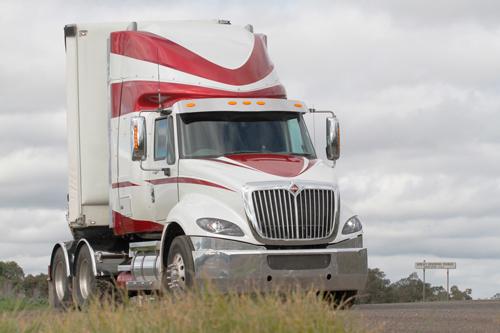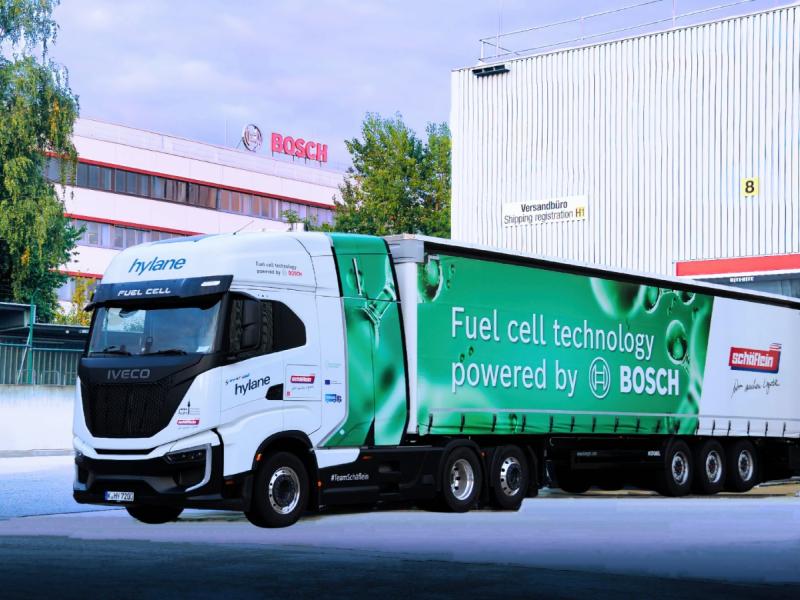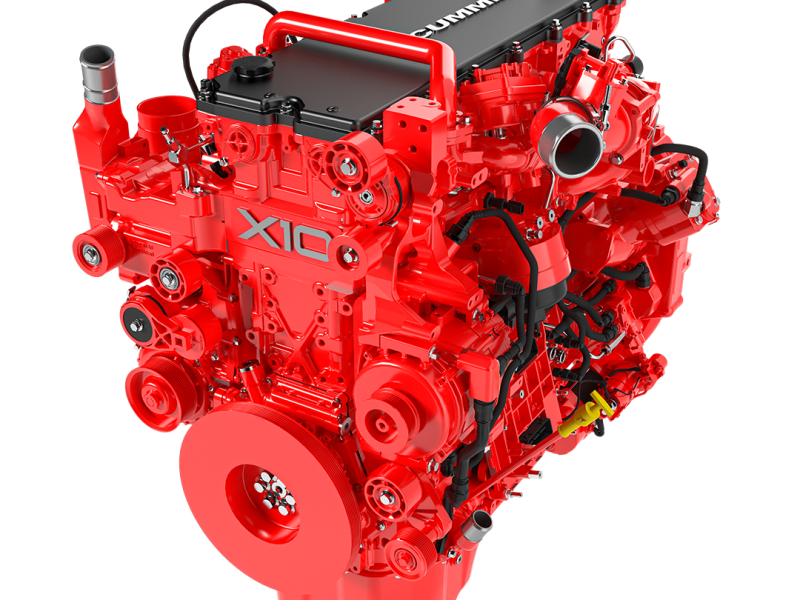Teams of Navistar engineers in the US and Australia are now engaged in a detailed component analysis of International ProStar in preparation for the streamlined model’s commercial lunge onto the Australian and New Zealand market early next year.
ProStar is the spearhead of International’s much-anticipated return to the local market, and received an award-winning response from visitors and commentators alike during its first public appearance at the recent Brisbane Truck Show.
“The level of response to ProStar and the International brand in general was overwhelming,” says Glen Sharman, director of sales, marketing and business development at Navistar’s Australia/Pacific division, Navistar Auspac.
“It certainly highlighted the passion and extent of International’s connection to this market and there was no better stage than the Brisbane show to re-introduce the brand and present the Cummins-powered ProStar for the first time.
“Still, our effort at the truck show was just one of many steps in the process of rebuilding International’s presence.
“From here on a major focus is confirming ProStar’s engineering credentials for this market before it goes on sale early next year,” he explains.
“ProStar is a top-selling truck in North America with a leading reputation for aerodynamic efficiency and reliable performance. As such, and with the added benefit of five years’ experience in the Australian market with Cat-branded product, we have a great foundation to work from.
“However, Navistar both in the US and here is leaving nothing to chance when it comes to bringing International back to life in Australia.”
On the product front, durability is the key factor with every component detail now being scrutinised and revalidated to ensure suitability for Australian conditions.
Leading the engineering effort in close association with US counterparts, Navistar Auspac chief engineer Adrian Wright and highly experienced senior engineers John Drakopoulos and Garry Perkins have collectively accumulated decades of experience with International products.
“This is certainly no quick ‘tick the box’ exercise,” says a resolute Adrian Wright. “Between now and ProStar’s commercial availability next year, every component and assembly will be assessed, evaluated and ultimately validated for local conditions.
“At the same time we’ll be verifying the aerodynamics and fuel efficiency which are such big assets for ProStar in the US.
“So while dealership and service structures continue to be negotiated and developed, engineering appraisal and on-road testing of ProStar is now running at full throttle.
“It is a massive exercise and nothing is being assumed or taken for granted. Just because a particular part or assembly is successful in the US doesn’t automatically mean it’s qualified for our market. Numerous US brands have made that mistake and Navistar has no intention of becoming one of them.
“And for the most part, it’s the US driving this exercise,” he insists. “They don’t want problems down the track and of course, neither do we.
“In some ways it could perhaps be considered a case of engineering overkill, but in every way the sole intention is to produce a better truck.”
While New Zealand and Australia may be a relatively low volume market in the global context, Navistar engineering executives are well aware of this market’s highly competitive and often demanding character. Consequently, Navistar engineering teams have adopted a ‘high volume’ approach which effectively works to avoid small problems becoming big issues on high volume production lines.
“For a major manufacturer like Navistar, a small issue can have dramatic flow-on effects for the company and worse, its customers,” explains Adrian Wright. “This exercise is all about avoiding those issues.
“There are no shortcuts. Everything is being assessed, from the chassis to cab structures, to minor components and attachments, and electrical systems.
“Right now there are hundreds of components under evaluation and there are still plenty to go with well over 2,200 parts and assemblies making up the bulk of the right-hand-drive ProStar’s ‘bill of materials’.
“Where there is the possibility for difference between the US and Australia in the durability of a particular part or assembly, then that difference is analysed, tested and if necessary, the component is strengthened.
“So far there has been little need to change anything but this is an ongoing exercise and it won’t be complete until we’re sure that each part or assembly will meet its original design goals under Australian conditions,” he emphasises.
A significant advantage in the evaluation process is Navistar’s fully integrated computer engineering system which delivers immediate ‘real time’ access between engineers working on opposite sides of the globe.
“It’s a system which provides an incredibly effective engineering capability,” Adrian Wright comments. “The information is so immediate you feel like you’re in an office next to the engineering centre at head office in the US.
“The time benefit is extraordinary because it largely nullifies the time difference between Australia and the US, and results can be achieved very quickly. For instance, an engineer assessing a particular part in the Springfield (Ohio) production plant can finish his day’s work, then one of our team takes over and that part can be validated in half the time it would’ve taken one engineer.
“Navistar may not yet be well known to Australian truck operators but it is a vast company with massive resources and engineering capability. In fact, its engineering systems are as good as anything I’ve seen or worked with anywhere in the truck world,” he enthuses.
“A real benefit for our market is that it’s also a custom engineering system, even down to chassis drill holes for individual applications. There’s plenty of flexibility in specifications, something that’s becoming increasingly rare in the modern manufacturing world.
“So while Navistar is a giant corporation, it hasn’t lost sight of the need for design flexibility in its products. For this market, that’s a major asset,” Adrian Wright concludes.






